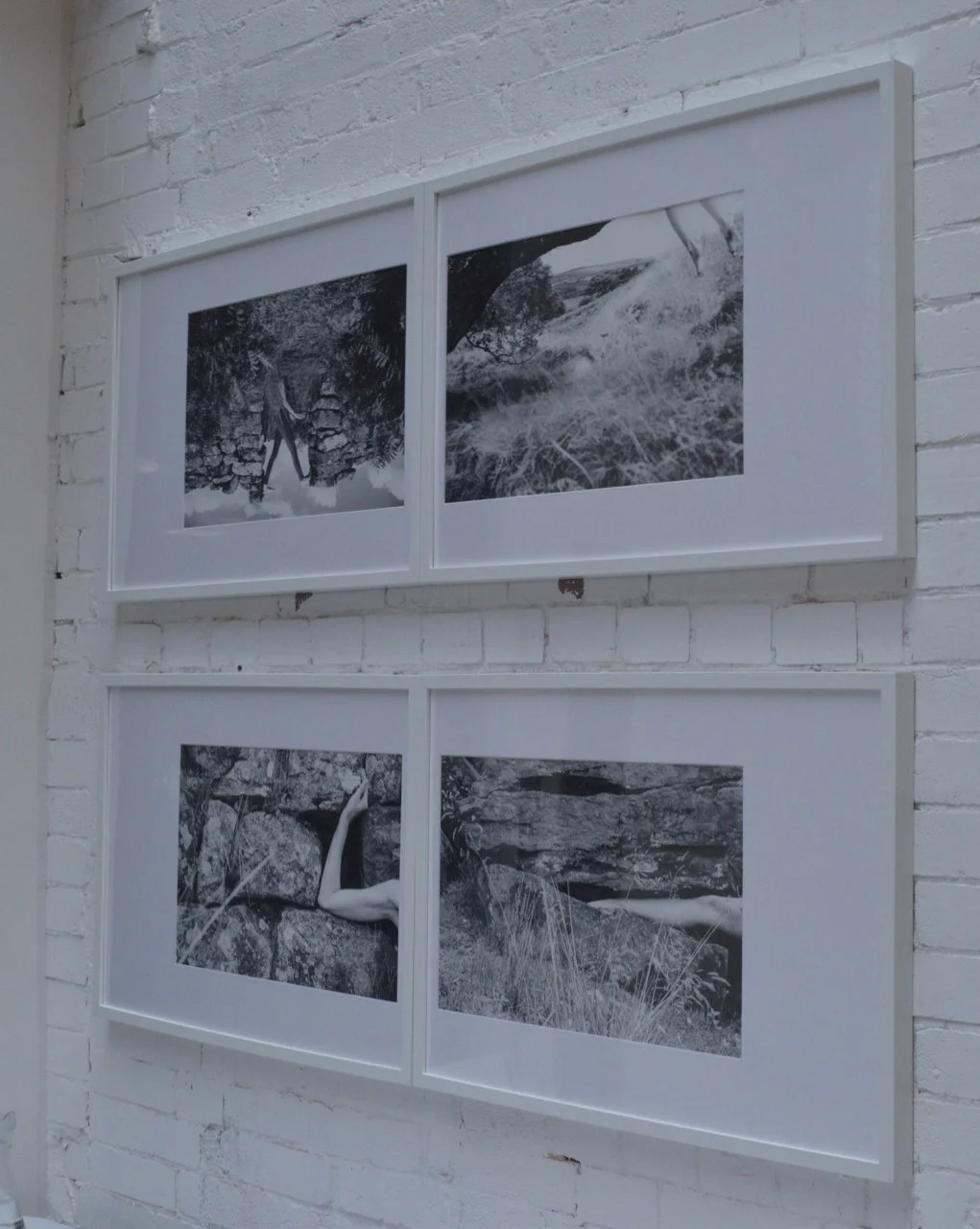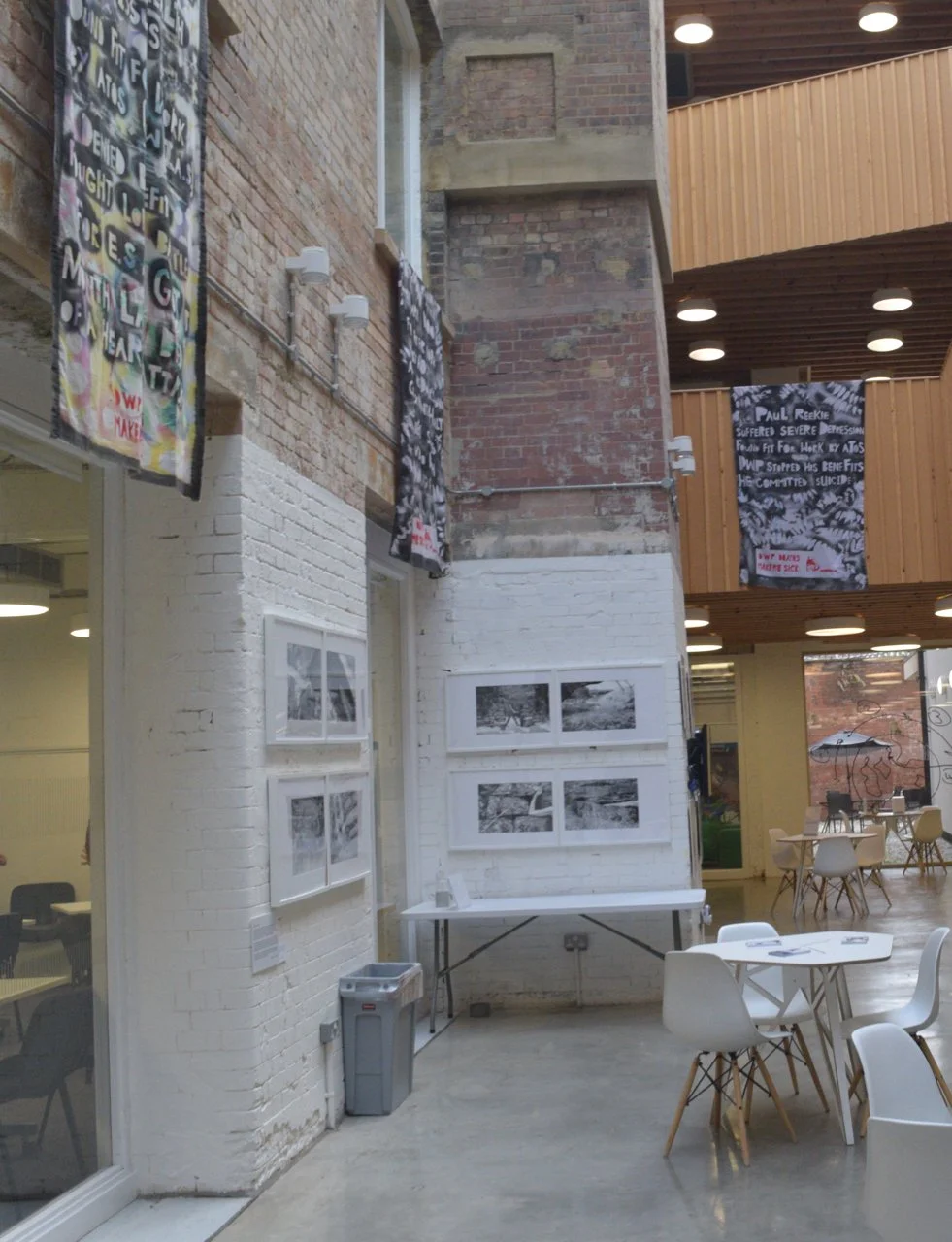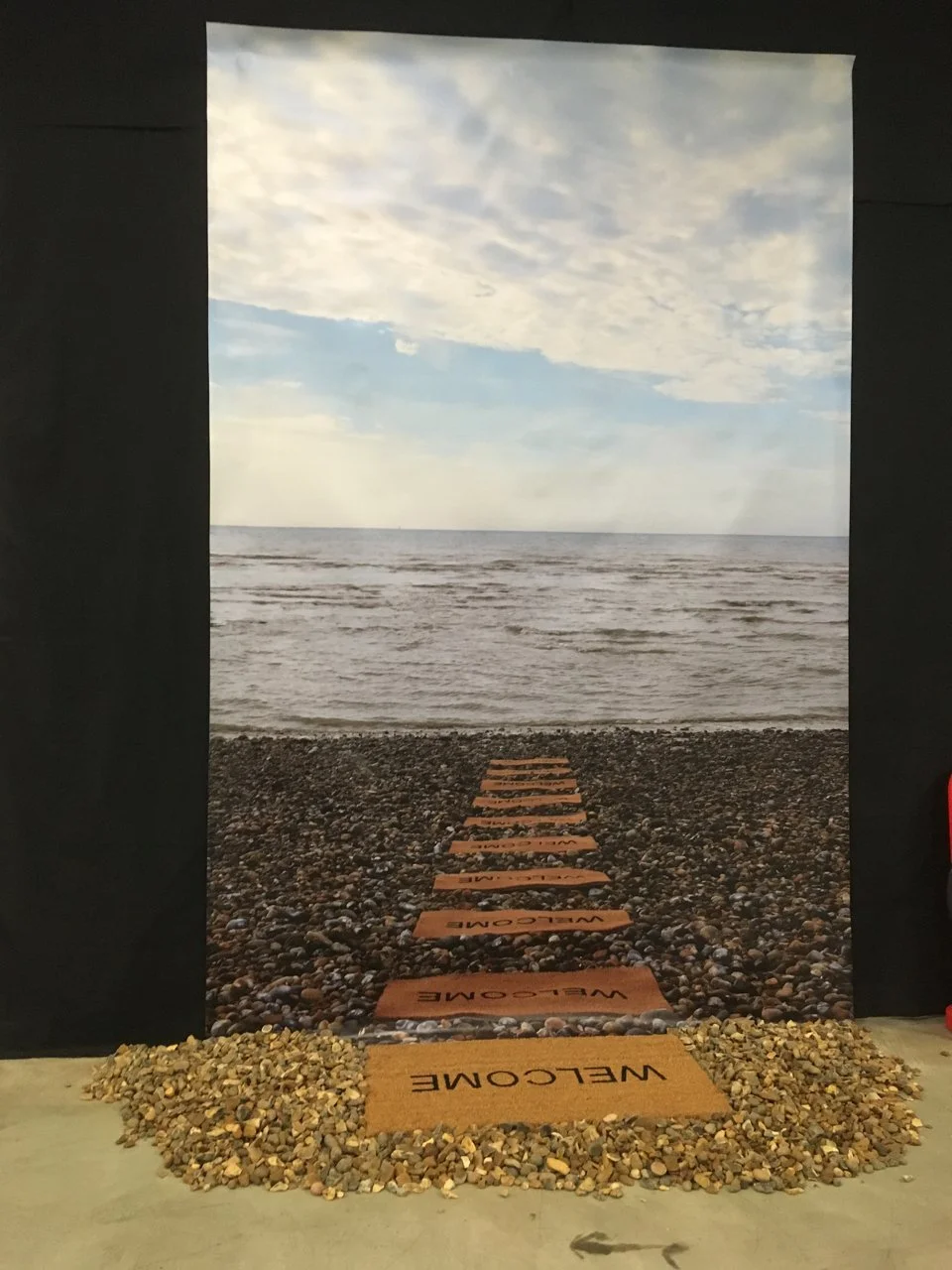Exhibition Description
We are living in a time of rising extremism. In our everyday, space and structures are increasingly contested. There is a conflict being played out by the political, economic, social, cultural and environmental protagonists vying for whose narrative becomes dominant. Ultimately, the winners get to set the agenda, deciding who gets how much of what, who gets included and excluded, who gets praised or vilified and whether we live in a toxic environment or a compassionate one. Meanwhile the binary extremes of racism, homophobia, sexism, gender, left and right, to name but a few are becoming ever more polarised. Tolerance and compassion seem less present as the everyday extremism becomes more entrenched and present in the rhetoric and actions of those seeking to influence and exert dominance.
Disability sits at the nexus of this conflict. Whether it is being a superhuman and winning a gold medal or being punished for having a spare bedroom. Our urban environment can be ‘designed to exclude’ and equally ‘designed to include’ and be accessible depending upon stairs or ramps; safe and social spaces or dangerous and unwelcoming; loud and over-stimulating or quiet and calming. This also extends to the structures of government be that the Home Office with its ‘hostile environment’ directed at refugees and immigration, or the Department for Work and Pensions’ treatment of disabled people. Cultural organisations such as art galleries are also spaces which play out these dominant narratives.
Contested Spaces brings together work by eight disabled artists whose works meet at the intersections of these issues. These are voices which are rarely heard and often forcibly silenced, yet here they coalesce in a cacophonous chorus. They stand in defiance against other sites of marginalisation: homelessness, institutionalisation, immigration, benefit claimants, neurodiversity, sexism. this reminds us that in the battle over such contested spaces, we cannot remain quiet. We are both stronger and louder together.
List of works
This list and other informstion is available on the Disability Arts Online website with a curators tour and podcast.
Kate Murdoch, WELCOME
An image of a beach with welcome mats coming towards the viewer. On the floor in front of the image is another welcome mat surrounded by beach shingle. It is as if the beach is coming into the room.
This piece talks of the marine migrant crisis, the unknown deaths, the hostile environments, a lack of responsibility for the crisis we are complicit in. This piece is counter to the anti-immigrant, anti-refugee narrative which predominates. By having a welcome mat on the floor, it is as if Murdoch is saying ‘and yes, you’d be welcome here too’.
Kate Murdoch, Sweet Nothings
A small dresser with a mirror holds around a dozen female figurines all huddled together looking into the mirror. Closer inspection reveals they all have Elastoplast over their mouths. However, this does not talk of healing or soothing or of making better.These inanimate women are not just without movement but without voice. A quietly sinister provocation. At once it references the beauty myth, women should be seen and not heard which also related to children. Are these women on the dresser being infantilised, or even infantilised and sexualised. The women’s attire of glamourous and utilitarian clothes, almost a fetishisation – or darker yet as an allusion to the porn epidemic. A silent narrative of women having no power, no agency and no voice.
Colin Hambrook, In the woods they will blast your courage to tell you, you are not a tree
This painting is densely packed with Hambrook’s visual language and metaphors. At first glance traditional romantic style iconography takes the eye, the presence of nature, imagery imbued with emotion. Let the eye linger a little and the woods are an altogether darker place.
In the root of the tree a male adult holds a baby and looks on, perhaps a paternal reverie. However, the faces in the tree trunk and the blue cloud of leaves made of a myriad of indistinguishable faces set a different mood. Being watched, judged, doubted, this is far from the benevolent paternal gaze, perhaps highlighted by the presence of a family of birds and a black bird in the tree. This is a tree without other trees, yet the title suggests not being alone here – these are woods, plural, but they are absent in the image.
This painting for me represents the complex process and emotions associated with othering. Having the very core of sense of self doubted, our identity and sense of reality. If we are not who and what we believe then who and what are we? It is suggestive of the 1944 film Gaslight from where the term gaslighting comes from, a form of psychological abuse based on manipulation.
Colin Hambrook, Artaud’s Bastard Child I & II
The themes from Hambrook’s other work follow into Artaud’s Bastard Child (i and ii). Here, the work is in response to Antonin Artaud’s work on psychiatry. Again, there is the motif of the tree, faces, of being observed and perhaps judged. The apparent schism of inner and outer lives. The pen and ink drawings have an almost obsessive feel, less expansive and far more psychological tension than ‘In the woods…’ Again, we are dealing with a sense of otherness and of being ‘othered’ and a clear sense of conflicted or contested perceptions between a normative gaze and a non-normative world.
Elinor Rowlands, collection of three films
Rowlands’ films are on the surface quiet, poetic treatise exploring her identity – through inner and outer landscapes, the virtual and the real, the concrete and the metaphoric. As a woman identifying as disabled it is not surprising that Rowlands responds to the world in a visceral, physical manner. Yet there is a conflict here with the intellectualisation we sometimes see which she wrestles with, through her deft use of visual and metaphoric imagery.
Using narrative – observed, imagined and autobiographical – we are taken on journeys – the romantic, the mythical, the traumatic. The multitude of roles women play within these are explored in relation to identity using personal, historical and cultural tropes. Within the viscerality it feels there is a fragility just below the surface here, whilst being grounded by her personal heritage…We are seduced by emotions, connections, love but the shadow side is never far away.
Vince Laws, DWP Deaths Make Me Sick
Four shrouds hang from the first floor. Not banners or flags but shrouds. And yes the text on them maybe appropriate for flags and banners and for the marches and speeches against austerity. But these are definitely shrouds. The two definitions of shroud have a poetry here which I am sure did not go unnoticed by Laws.
A length of cloth or an enveloping garment in which a dead person is wrapped for burial
To cover or envelop so as to conceal from view.
Each of the shrouds is for someone named who died following benefit assessments. The alternative meaning of shroud to conceal from view is pertinent here, as the DWP will not answer FOI requests into how many people have died in these circumstances. The fact that these are not generic shrouds but individually named with very personal stories gives this work a particular poignancy. Tragedy upon tragedy is the fact the shrouds are being added to as another person pays the ultimate cost of austerity.
Malgorzata Dawidek, Diagnoses and Reconstructions
In Diagnoses and Reconstructions, Dawidek is examining the body in relation to nature, and questioning the medicalised model of disability. Finding features in the landscape which were somehow imperfect or broken and spoiling the perceived perfection of nature she uses her own body to intervene and ‘mend’ – as Dawidek says to ‘become a prosthesis for nature’. It is hard here then to escape the analogy that the disabled body is an imperfect version of a perfect self.
The placing of the body in nature, an arm in a hollowed-out branch, hanging from the bough of a tree certainly references romanticism but this is much more rational than emotional. The location of this photography in Northumberland where the effects of feudalism still exist evoke the spectre of the enclosure laws. Where harmonic relationships between land, landowner and tenant experienced a seismic shift. Perhaps this is the real location of the ‘contested’ within this work. Echoes of displacement and the wider clearances can be heard in the distance.
Juan Delgado, Altered Landscapes and The Shadow of the Midnight Sun
We listen to the voice of an invisible narrator in Altered Landscapes. A personal and transpersonal story, it could be the story of a myriad of displaced people. The path of the journey taken, nature littered with the detritus of human movement, security outposts and barriers both man-made and natural. This is not a journey made lightly or for fun. The invisible protagonists here may pay the ultimate cost for even trying to make this journey. The sense of desperateness, loss, isolation is palpable. On a dual quest for freedom and to find the people from whom they have been separated. The sparse text, the black and white footage, the transitions from urban to the unknown all add weight here, as if any adding were needed. Unfortunately, this invisibility is played out and repeated in our society – people becoming living ghosts.
In the Shadow of the Midnight Sun is an altogether more optimistic work. A work in progress, another journey. Dealing with outsiders, refugees those who have been displaced. Interesting here how an external refugee narrative is also addressed and mirrored by the internal displacements of indigenous peoples in the Arctic. Perhaps the fact that this is a snippet is also indicative of the degree of exposure we are given to the real lives of people – stories which deserve more witnesses.
Kin, Access Denied
A series of houses drawn on unfolded cardboard boxes. Who lives there, what happens behind those closed doors, perhaps trying to catch a glimpse of life in the lit rooms as a passer-by – but these windows are dark, lifeless, empty. This work explores the intersection of prosperity and austerity at the place where they collide. Foreign investors, land bankers, property speculators dealing in empty properties whilst many go homeless or rent substandard properties. However, interact with the conductive material and the lights turn on – transforming the feel of the houses, perhaps turning them into homes with a completely different narrative.
Some however, will never know a home, only the shelter of this ubiquitous, almost valueless material to create a temporary shelter. This work directly addresses the contested space of value and worth – between property and people – the priority is all too visible on the city streets where shoes sit outside tents and cardboard shelters on the streets, whilst building new flats continues unabated.
Dolly Sen, You Are Here
‘You are Here’ is a common enough phrase on a notice board or on a map. An arrow or circle clearly defined and definite. No doubt about it – you are here. But what if that is not the case. What if you aren’t there, or aren’t there wholly? What if only a part of you is there? And then, what if part of you is somewhere else too. And not just in one place but many?
‘You are Here’ is as much about identity as it is about location. Or more accurately where is your identity located, within yourself but also within societal structures. Sometimes it is not a case of being a cis gendered female or male, and sometimes it is incredibly complex. With multiple identities comes a question of where our anchor is, where are we located if not within the dominant culture. This can lead to every space you find yourself in being questioned or contested and ultimately continually question where am I rather than being ‘safe in the knowledge’ that You are Here!
Aidan Moesby, Do Not Be Silent
They do not need to silence us if we do not use our voice is a call to arms. As austerity and the precarity of low wages, zero hours contracts of workers and the marginalisation of vulnerable groups has embedded in society, the opposing voices have largely fallen silent. As if we are accepting our lot and should be grateful for any little crumbs which fall from the tables of ‘the few’. The government has succeeded in dividing and conquering, the populace is doing the governments bidding, vilifying the most vulnerable – the sick, the disabled, the refugees, asylum seekers, immigrants. Yet where would we be if Emily Pankhurst, The Tolpuddle Martyrs, Disability Rights Movement or the Poll Tax Demonstrators had kept quiet? The voices of dissent, of positive social change, of the strong standing up for the weaker, or us standing together stronger in unity have fallen largely silent.










